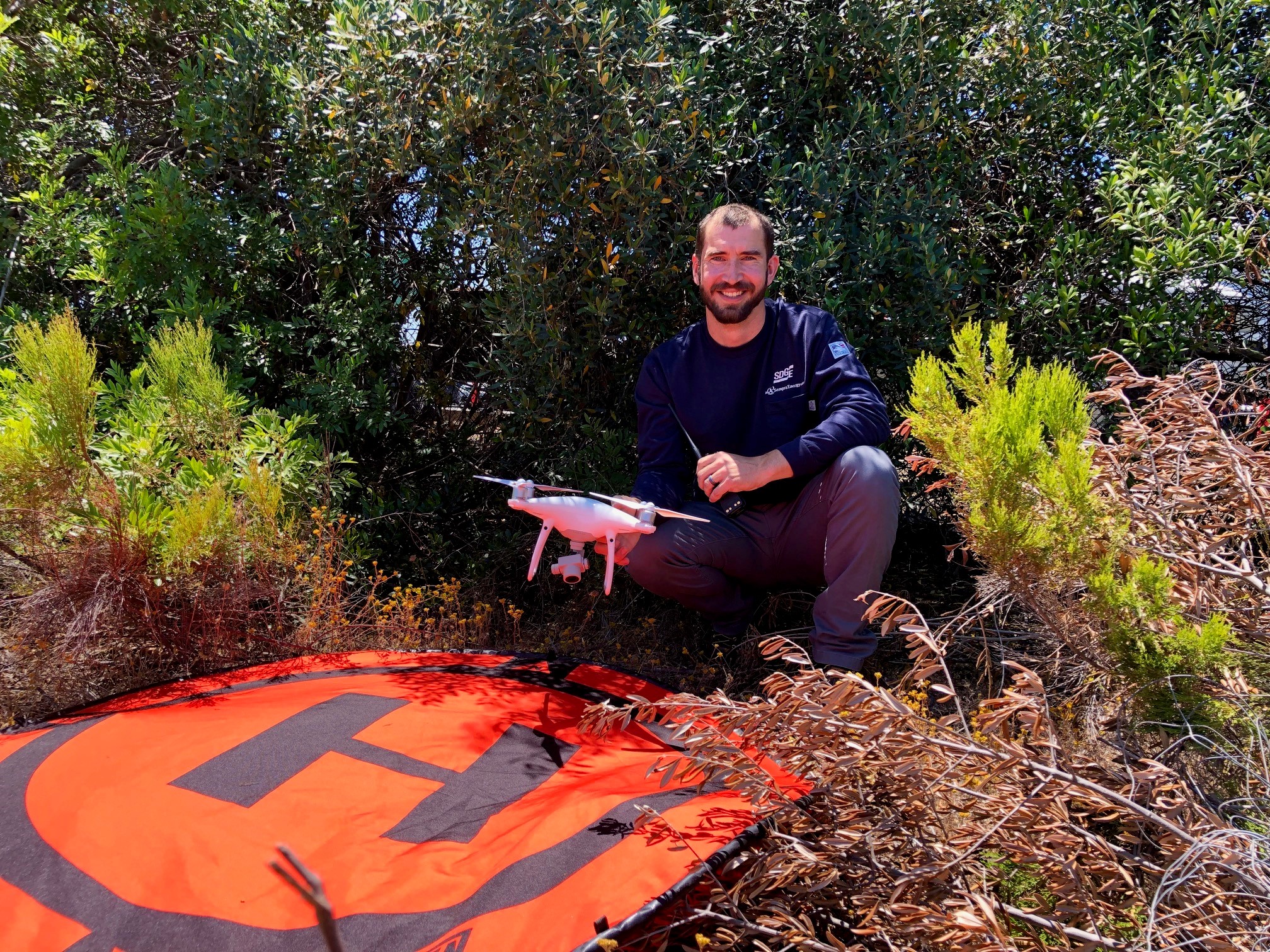Inspecting natural gas facilities and electrical lines, improving response time to emergency situations, and helping to locate the cause of power outages with the help of unmanned aerial systems (UAS) are all in a day’s work for SDG&E fire coordinator and drone operator Richie Veihl.
Richie joined our company’s fire coordination team in 2011. The team is part of our Fire Science and Climate Adaptation Department – created to specifically enhance our company’s resiliency in addressing growing risks posed by climate change and devastating wildfires.
Fire Coordinators serve as liaisons to local fire and police departments to facilitate two-way communication and coordinated emergency response. The team, consisting of five veteran firefighters, collectively has more than 120 years of fire experience. Each team member has areas of specialty. Richie’s are electric, gas, and fire safety. Richie focuses on implementing new technologies to support fire prevention and emergency response for large projects, internal and external training, and SDG&E emergency response.
Richie is one of two fire coordinator who are trained and qualified to fly unmanned aerial systems – commonly known as drones – to inspect our facilities.
He flies the drone to document vegetation near SDG&E equipment or SDG&E Fire Defense Improvement Projects. He usually gathers before, during, and after images, documents construction project progress and fire risk and gathers information to enhance situational awareness on incidents.
Before joining SDG&E, Richie was a firefighter/EMT for Intermountain Fire & Rescue Department and the San Diego County Fire Authority. Recently, we conducted a Q&A with Richie to learn more about him and his job.
Tell us a little bit about yourself.
I was born in San Diego and aside from college, I have lived in San Diego County my entire life. My wife and I have been married since 2015, and we have a son named Caleb who was born in January of 2018.
How did you make the decision to get into this field and when did it all start for you?
Growing up I always wanted to work around fire. I love being around fire, talking about fire, learning from the people around me and being able to work through rapidly evolving high-stakes incidents that have consequences that can change lives.
How is this position different from your previous positions?
The biggest difference between being a Fire Coordinator and being a firefighter is the scope of what I am responsible for. As a firefighter I was responsible for medical care of a patient or working with my engine to control our piece of a fire.
As a Fire Coordinator, the responsibility shifts, and I am required to see the entire incident, how it could impact SDG&E and/or the firefighters, communicate through the incident command structure and assist in the development of an overall incident plan. At SDG&E I also have the ability to work prior to incidents to prevent them from occurring in the first place.
What does it mean to be a member of the Fire Coordination Team?
It means that I am part of a team that values experience but is always pushing for new ways to leverage technology to improve the lives of our customers and mitigate the risk of wildfire to SDG&E.
What does your day-to-day look like?
One of the things I like most about my position is that every day is different but it’s always busy. Along with normal work, most of my weeks involve at least 4-7 project meetings, a couple of site visits, at least one response for data or analysis of data, an unmanned aerial system (UAS) flight, teaching classes, and when I’m home chasing around a 11/2-year-old. I am also part of our 24/7/365 Fire Coordinator On-Duty schedule so when I have the duty, I respond to fires or other SDG&E-related incidents.
Is there any incident that stands out that you are most proud of?
The 2017, 2,000-acre Gate Fire that tripped a 500kv line within the first 42 minutes of the fire stands out for me. I drove to the incident, as soon as I learned that the fire was burning under the line.
Once on scene I tied in with the fire’s Incident Commander, the Liaison Officer and the Incident Safety Officer to keep them informed of the SDG&E’s response to the incident and worked to ensure the safety of our responders as well as the firefighters.
Once Transmission Construction and Maintenance (TCM) was on scene, a plan was created to re-energize the 500kv line, which was approved through fire’s Incident Command. During the day, we used various pieces of equipment and were in constant communication with the incident. Within seven hours the line was safely re-energized with no injuries to fire or SDG&E personnel.
What stands out is how this fire highlighted the value of the relationships that we have with the fire departments of our service territory. This relationship is unique to SDG&E, and through the support of our internal departments that manage the grid and respond to incidents and external agencies, we were able to be successful.


